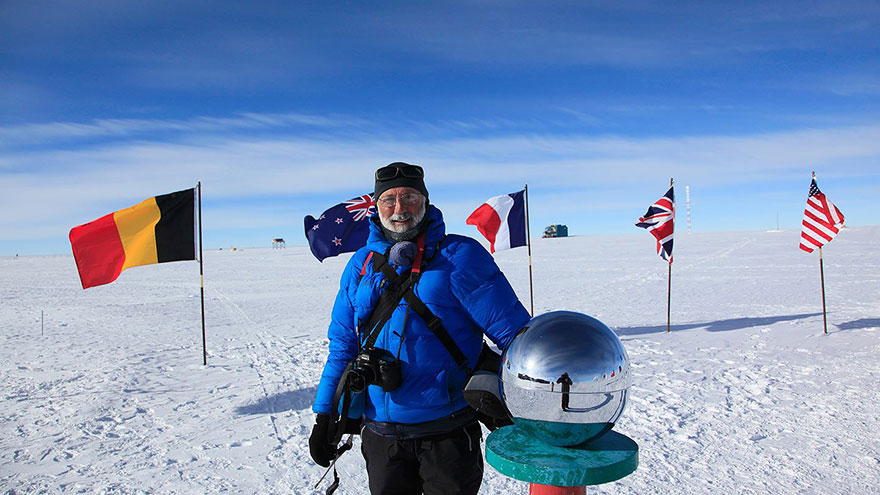South Pole Tours
Around 30,000 people visit Antarctica each year, but most of these stay in cruise ships along the Antarctic coastline to spot whales, penguins and albatross. The real challenge lies almost a thousand miles inland, in one of the most remote locations on the planet.
The South Pole was first conquered in 1911 by a Norwegian team lead by Roald Amunsden. A century later, this last great frontier is open to the public, although it still takes a special caliber of tourist to complete the trip.

Starting Considerations
Tours to the South Pole are unlike any other in the world. Visitors need to be resilient and able to cope with temperatures consistently around minus 40 degrees Fahrenheit, and be comfortable in cumbersome cold weather gear throughout.
They must also be physically fit — hikes of over a mile at altitudes above 9,000 feet may be necessary. An implied requirement is also that tour participants need to be wealthy. The cheapest tour starts at around $40,000, not including hefty personal insurance coverage in the case of medical emergency evacuation.
Expedition Logistics
Tour participants typically fly into either Santiago, Chile, to proceed to Punta Arenas or to Buenos Aires, Argentina, to continue to Ushuaia. The next step is the two-day crossing of the potentially turbulent Drake Passage in order to arrive at permanent camps such as Union Glacier at the foot of the Ellsworth Mountains.
After a couple of days of acclimatization and short expeditions, tours then depart either by Twin Otter ski plane for a four- to five-hour flight to the Pole, or embark upon a longer overland expedition. Most tour operators run permanent camps at the South Pole where visitors stay a night in tents at the bottom of the earth. Tours run only during the Southern Hemisphere’s summer, from November to March.
Comfortable Tours
The South Pole lies approximately 700 miles from the Antarctic Coast, on the Polar Plateau around 9,000 feet above sea level. Specially adapted planes leave from Union Glacier and, weather permitting, cross the expanse of icy wasteland to land on a snow runway at the Pole. Visitors stay overnight in the camp, from which they can visit the Geographical Pole and the Ceremonial Pole, each marked by flags.
They can also visit the area’s only permanent structure, the U.S. Amundsen-Scott Research Station, which has been continually manned since the 1950s. Flying back to Union Glacier, participants can take part in a final round of ski and hiking activities around camp, including spotting Emperor Penguins.
Strenuous Challenges
Those who wish to follow the ski tracks of the great explorers can apply to take part in an overland expedition with a handful of reputable operators. Participants need to supply proof of appropriate experience, as the expedition involves hauling a sled through more than 700 miles of frequently horrendous conditions — for up to ten hours a day.
The longer trips last up to 60 days and start with a grueling climb to the plateau 2,600 feet above sea level, followed by weeks of skiing into the wind. A shorter expedition flies the first part and cuts the skiing down to one week, while those without time to spare can opt for the tour that skis only the final 12 miles to the pole. All tours return to Union Glacier by plane.
You Might Also Like :: How to Have an Adventure

